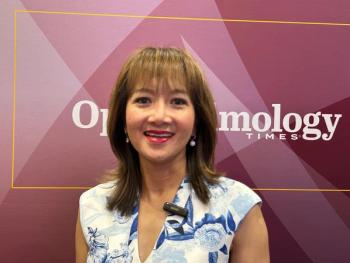
Anti-VEGF Treatment for Wet AMD
Panelists give insight into the role of anti-VEGF therapy for wet AMD treatment and share personal experiences counseling patients on the goals of therapy.
Episodes in this series

Charles C. Wykoff, MD, PhD: Let’s move forward and talk about treatments of neovascular age-related macular degeneration. Diana, what role do anti-VEGF agents play in the treatment of wet AMD? It sounds like a silly question, but how do you pitch that to patients? If you have a patient sitting in front of you, how do you talk about this class of medication that has revolutionized what we do?
Diana V. Do, MD: The conversation is easier because we have over 15 years of experience using intravitreal VEGF inhibitors as a first-line therapy for wet AMD. I can confidently tell my patients that there is a strong body of evidence showing both the efficacy and safety of these medicines that I would treat any of my family members with it. I wholeheartedly suggest to them that we instigate treatment immediately if they have wet AMD. Sophie, can you speak to your patient population? They probably trust your guidance as well. Don’t you feel that we just have so much efficacy that it’s a no-brainer to treat patients with these medicines?
Sophie J. Bakri, MD: I don’t really give them a choice. I offer it, and I highly recommend it. If they ask what the alternative is, then I say that’s not good. But you’re absolutely right, Diana. We’ve had these drugs for so long. We know them very well. The safety is very well established, and the efficacy is remarkable. We’re doing the right thing when we are highly recommending these injections. With very rare exception, most patients will accept our recommendation.
Charles C. Wykoff, MD, PhD: Sophie, you speak very well with patients. I’ve heard you describe your communication pattern with patients before. Tell us how you specifically communicate the goals of therapy with patients and their family. They’re sitting in front of you; they have blurry vision. You’re telling them what you’re going to do. How do you describe what your objectives are?
Sophie J. Bakri, MD: I have several goals in mind that I like them to understand. The goals I try to communicate are, No. 1, that we would like to save the vision that you have. If they have 1 other eye that has already gone blind from AMD, then I say we don’t want the right eye to go the way of the left eye. They totally get that, especially if they didn’t have the opportunity to have that left eye treated. No. 1 is vision preservation. No. 2 is a chance for vision improvement. We know that in the trials about a third of patients improve vision. We go for preservation first and improvement second. The last thing I want to talk about is compliance. Sometimes I feel that as much as I tell patients that it’s a lifelong treatment, at some point they’ll come back and say, “I thought that was just 3 injections,” or, “It was just a year”—whatever the number is. I really try to insist that they understand that it’s a lifelong treatment and that their compliance is key to this partnership. One thing I do is I liken it to blood pressure pills. They say, “What would happen if I miss a month or I miss a treatment?” And I say, “What would happen if you missed a blood pressure pill? You’re blood pressure will go up.” Some of them say, “You mean my fluid might go up and down?” And I say, “Exactly. It’s like your blood pressure. It’s like your diabetes.” When I liken it to those common diseases, patients really get it. But I try to have those conversations.
Charles C. Wykoff, MD, PhD: Great insights. Fantastic. Mark, do you specifically communicate any of the risks of treatment? Anytime we put a needle in any part of the body, there are risks. Do you specifically communicate that to a treatment-naïve patient that you’re treating for the first time? If so, what do you say?
Mark P. Breazzano, MD: Absolutely. I communicate with them any procedure that we do on a patient, any treatment we do has a risk. There’s no way around it. We do everything we can to minimize those risks. I communicate, even though it is rare, but the 1 many of us worry about most is endophthalmitis. That risk, I communicate, it’s 1 of several thousand, and we’re just cleaning the eye best as we can and doing in a safe and effective manner to minimize that. Of course, then we go to the more common things like irritation afterward. Because as you said, in this treatment-naïve patient who hasn’t been exposed to anything like this before, their first response is, you’re going to do what to my eyeball? And after the first or second, 1 of the most common responses is, “It really wasn’t that bad.” But when the numbing wears off, a lot of them are wondering how the eye is going to feel. Going over that and minimizing that with artificial tears and really knowing when to call or come back in with worrisome signs.
Transcript edited for clarity.
Newsletter
Don’t miss out—get Ophthalmology Times updates on the latest clinical advancements and expert interviews, straight to your inbox.




















































.png)


